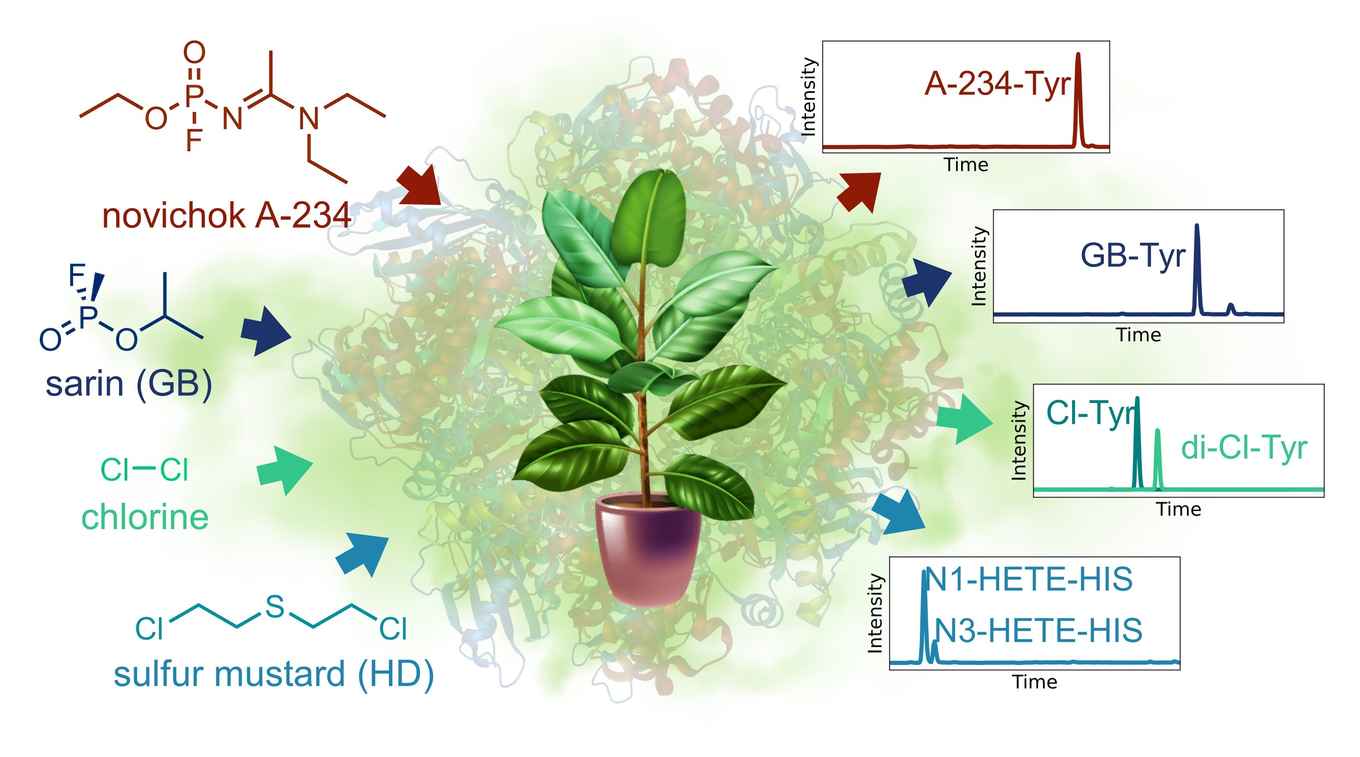Finding evidence in plants for the use of chemical weapons
30 January 2023

The research was recently published as a ‘hot article’ in the scientific journal Analytical Methods and features on the cover. First author is Mirjam de Bruin-Hoegée who performed the research as part of her PhD study under supervision of Arian van Asten, professor of Forensic Analytical Chemistry and On Scene Chemical Analysis at the University of Amsterdam and one of the directors of the Amsterdam Center for Forensic Science and Medicine (CLHC). De Bruin-Hoegée cooperated with researchers at TNO Defence, Safety and Security in Rijswijk, and with scientists of various member states of the Organisation for the Prohibition of Chemical Weapons (OPCW) as part of its “Plant Biomarker Challenge”. The OPCW was awarded the Nobel Peace Prize in 2013 for its comprehensive efforts to eliminate chemical weapons.
Abstract of the paper
The continuing threats of military conflicts and terrorism may involve the misuse of chemical weapons. The present study aims to use environmental samples to find evidence of the release of such agents at an incident scene. A novel approach was developed for identifying protein adducts in plants.
Basil (Ocimum basilicum), bay laurel leaf (Laurus nobilis) and stinging nettle (Urtica dioica) were exposed to 2.5 to 150 mg m−3 sulfur mustard, 2.5 to 250 mg m−3 sarin, and 0.5 to 25 g m−3 chlorine gas. The vapors of the selected chemicals were generated under controlled conditions in a dedicated set-up. After sample preparation and digestion, the samples were analyzed by liquid chromatography tandem mass spectrometry (LC-MS/MS) and liquid chromatography high resolution tandem mass spectrometry (LC-HRMS/MS), respectively.

In the case of chlorine exposure, it was found that 3-chloro- and 3,5-dichlorotyrosine adducts were formed. As a result of sarin exposure, the o-isopropyl methylphosphonic acid adduct to tyrosine could be analyzed, and after sulfur mustard exposure the N1- and N3-HETE-histidine adducts were identified. The lowest vapor exposure levels for which these plant adducts could be detected, were 2.5 mg m−3 for sarin, 50 mg m−3 for chlorine and 12.5 mg m−3 for sulfur mustard. Additionally, protein adducts following a liquid exposure of only 2 nmol Novichock A-234, 0.4 nmol sarin and 0.2 nmol sulfur mustard could still be observed. For both vapor and liquid exposure, the amount of adduct formed increased with the level of exposure. In all cases synthetic reference standards were used for unambiguous identification.
The window of opportunity for investigation of agent exposure through the analysis of plant material was found to be remarkably long. Even three months after the actual exposure, the biomarkers could still be detected in the living plants, as well as in dried leaves. An important benefit of the current method is that a relatively simple and generic sample work-up procedure can be applied for all agents studied.
In conclusion, the presented work clearly demonstrates the possibility of analyzing chemical warfare agent biomarkers in plants, which is useful for forensic reconstructions, including the investigation into alleged use in conflict areas.

Paper details
Mirjam de Bruin-Hoegée, Latifa Lamriti, René C. M. Olivier, Lai Fun Chau, Marcel J. van der Schans, Daan Noort and Arian C. van Asten: Verification of exposure to chemical warfare agents through analysis of persistent biomarkers in plants. Anal. Methods, 2023, 15, 142-153. DOI: 10.1039/D2AY01650H